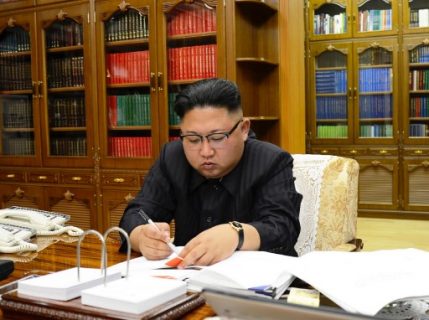
SEOUL, North Korea (AFP) — North Korea’s intercontinental ballistic missile is capable of carrying a “large, heavy nuclear warhead” that can survive re-entry into the Earth’s atmosphere, its official news agency said Wednesday.
The device, launched on Tuesday in a watershed moment for Pyongyang’s weapons ambitions, was capable of reaching Alaska, according to outside experts.
The Korean Central News Agency quoted leader Kim Jong-Un, who personally oversaw the test, as having inspected the Hwasong-14 missile and “expressed satisfaction, saying it looked as handsome as a good-looking boy and was well made”.
North and South Korea have been divided since the war on the peninsula ended in 1953 with an armistice rather than a peace treaty, and Pyongyang says it needs nuclear weapons to defend itself against the threat of invasion.
The United States “attempts to test our determination and ignores our warnings,” KCNA indirectly cited Kim as saying, and the North’s long confrontation with Washington had entered the “final stage.”
The North is subject to multiple rounds of United Nations sanctions over its nuclear and missile programmes, and the launch triggered a new chorus of condemnation.
For decades Pyongyang has sought to develop a missile capable of delivering a warhead to the continental US.
Questions remain about whether the North can miniaturize a nuclear weapon to fit a missile nosecone, or if it has mastered the technology needed for it to survive re-entry into the Earth’s atmosphere.
But KCNA said Tuesday’s launch had verified “all the technological requirements including heat resistance and structural stability of the re-entry nosecone,” which it said was made of carbon composite.
“Under harsh conditions involving thousands of degrees of heat, pressure and tremors, the temperature inside the nose cone was stable between 25-45 degrees Celsius,” it said, adding the warhead “flew flawlessly and struck the target precisely.”
© Agence France-Presse








